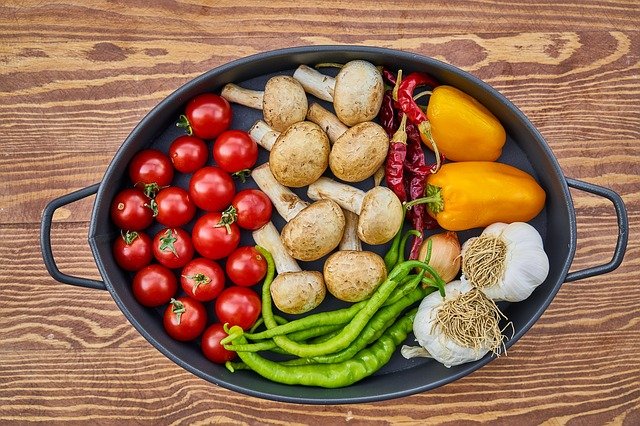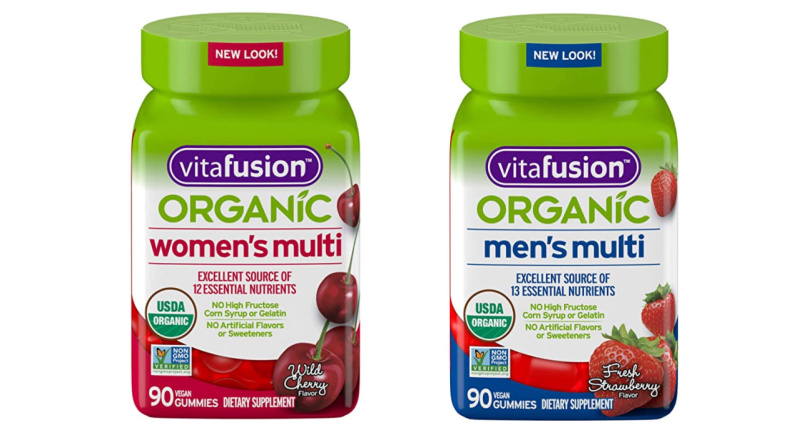
Many people wonder if vegetarians get cancer. There are many myths surrounding meat consumption. Recent research suggests that eating meat could increase your chances of getting cancer. There's more to meat that just eating less. A study has found that eating plant-based foods can reduce your risk of getting cancer. It is not to say that vegetarians are immune to cancer. Vegetarians can still get cancer even though they eat a lot of cholesterol.
Cancer is caused by red meat
Recent research found that vegetarian women had fewer cases than men of colorectal, breast and prostate cancer. Researchers also found lower rates for colorectal cancer in vegetarian women than postmenopausal and breast cancer in men who were vegetarians. While the relationship between meat intake and cancer risk is not clear, it could be that vegetarians are more likely to be overweight. Researchers also noted that the effect of the vegetarian diet on body weight index may have an impact on these results.

Cancer is caused by processed meat
Processed meat contains many chemicals, including nitrites, which can increase the risk of certain cancers. The chemicals in meat can also cause obesity, which raises the risk of breast and colorectal cancer. To reduce your risk, you can eat less meat or avoid it altogether. Try to find other alternatives to meat. Choosing poultry or other vegetarian options is a good alternative to meat.
Cancer can be caused by fish
Researchers from Oxford Population Health's Cancer Epidemiology Unit studied data from more than 472,000 people in the UK Biobank. Participants completed questionnaires regarding their meat and fish intake. The data were then classified into four groups: meat-eaters, fish-eaters, and vegetarians. In the study, meat-eaters had a slightly higher risk of colorectal polyps than vegetarians. But, the increased risk is not sufficient to dismiss the possibility of a vegetarian diet being better for your body than a meat-eater.
Meat processed
Researchers from Oxford University, UK, found that vegetarians and vegans have lower cancer risk than those who are strictly vegetarians. They studied data from 472,377 people aged 40 to 70. Participants completed questionnaires regarding their consumption of meat and fish. The study showed that vegetarians as well as vegans have a lower chance of getting cancer than either meat eaters or fish eaters. These important findings are important given that meat can cause death.

Cancer risk is reduced by eating meat-free meals
Oxford University's study found that low-meat diets may reduce cancer risk. The diets and habits of 472,000 British adults were examined by researchers. Participants were asked to complete questionnaires regarding their consumption of meat and seafood. The researchers calculated the prevalence of cancer in these people over a period of 11 years. They also considered body fat and smoking. These results were very striking. But, further research is needed to confirm the diets.
FAQ
Do I have to count calories?
You may wonder, "What diet is best for you?" or "is counting calories necessary?" The answer is dependent on many factors like your current state of health, your personal goals, how you prefer to eat, and your overall lifestyle.
The Best Diet for Me - Which One is Right For You?
The best diet is dependent on my current health status, personal goals, preferences, and overall lifestyle. There are many diets out there, some good and some bad. Some diets work for some people, while others are not. So what do I do? What should I do?
These are the questions that this article attempts to answer. It starts with a brief introduction of the different types of diets available today. After that, you will learn about the pros and disadvantages of each type. We will then look at how to pick the right one for you.
Let's start by taking a look at the various types of diets.
Diet Types
There are three main types. Low fat, high protein, or ketogenic. Let's briefly discuss them below.
Low Fat Diets
A low fat diet reduces the amount of fats you eat. This is achieved by reducing saturated fat intake (butter, cream cheese etc.). and replacing them with unsaturated fats (olive oil, avocados, etc.). Low fat diets are often recommended to those who wish to lose weight quickly. This diet can cause constipation, heartburn, and stomach problems. It can also lead to vitamin deficiencies, if someone doesn't get enough vitamins in their food.
High Protein Diets
High protein diets restrict carbohydrates in favor of proteins. These diets typically have more protein than other diets. They can help you build muscle mass, and also burn more calories. Unfortunately, they can't provide adequate nutrition for those who eat regularly. They may also be too restrictive and not suitable for everyone.
Ketogenic Diets
These diets are also known under the name keto diets. They are high in fat, moderately high in protein, and low in carbohydrates. These are often used by bodybuilders and athletes because they allow them the ability to train harder and for longer periods of time without feeling tired. You must adhere to all side effects such nausea, headaches, fatigue.
How can I live my best everyday life?
It is important to identify what makes you happy. You can then work backwards once you have identified your happiness. You can also ask others how they live their best lives everyday.
You can also read books by Wayne Dyer, such as "How to Live Your Best Life". He talks about how to find happiness and fulfillment at all stages of our lives.
What is the difference between a calorie or a kilocalorie.
Calories measure the amount energy in food. Calories are the unit of measurement. One calorie contains the energy needed to raise the temperature of one gram of water by one degree Celsius.
Kilocalories is another name for calories. Kilocalories can be measured in thousandsths of one calorie. 1000 calories are equal to one kilocalorie.
What is the working principle of an antibiotic?
Antibiotics are drugs that destroy harmful bacteria. Antibiotics are used for treating bacterial infections. There are many types and brands of antibiotics. Some are administered topically, while others are given orally.
For people who have been exposed, antibiotics are often prescribed. One example is if someone has had chickenpox and wants to prevent shingles. For those with strep-thorphritis, an injection of penicillin could be given to prevent them from getting pneumonia.
Doctors should prescribe antibiotics to children. Children are more susceptible to side effects from antibiotics than adults.
The most common side effect of antibiotics is diarrhea. Other side effects include dizziness, nausea and vomiting, dizziness, stomach cramps, dizziness, allergic reactions, dizziness, dizziness, stomach cramps, diarrhea, nausea, vomiting, allergy, headaches, dizziness, dizziness, dizziness, stomach cramps, and stomach cramps. These side effects typically disappear once treatment is complete.
What is the difference between sugar and fat?
Fat is an energy source that comes directly from food. Sugar is a sweet substance that can be found naturally in fruits or vegetables. Both sugars and fats have the same calories. But fats are twice as calories as sugars.
Fats are stored in your body and can cause obesity. They can lead to cholesterol buildup in the arteries, which could cause heart attacks or strokes.
Sugars are quickly absorbed into the body and provide instant fuel. This causes blood glucose to rise. High blood glucose levels can pose a danger because they increase the chance of developing type II Diabetes.
What is the problem with BMI?
BMI is the acronym for Body Mass Index. It measures body fat based upon height and weight. BMI is calculated using the following formula:
Divide the weight in kilograms by the height in meters squared.
The result can be expressed as a number, ranging from 0 through 25. A score of 18.5 indicates that you are overweight and a score of 23 indicates that you are obese.
A person who weighs 100 kg and has a height of 1.75 m will have a BMI of 22.
What should you eat?
Eat lots of fruits and vegetables. They are high in vitamins and minerals, which can help strengthen your immune system. They are also rich in fiber, which is good for digestion and makes fruits and vegetables filling. Include at least five portions of fruit and vegetables per day.
Water is essential for your body. Water flushes toxins out of the body and helps to feel full between meals. Drink about eight glasses each day.
Eat whole grains instead of refined ones. Whole grains contain all of their nutrients, including B vitamins and iron. Refined grains are stripped of some of their nutritional value.
Sugary drinks should be avoided. Sugary drinks are full of empty calories and lead to obesity. Choose water, milk or unsweetened tea instead.
Avoid fast food. Fast food has little nutritional value. It may taste great but it won't give you the energy you need to function properly. Instead, stick to healthier options like soups and sandwiches, pasta, and salads.
Limit your alcohol consumption. Alcohol is a poor nutrient and has empty calories. Limit your consumption to no more then two alcoholic beverages per week.
Reduce red meat intake. Red meats are high-in saturated fats and cholesterol. Lean cuts of beef or pork, lamb and chicken, as well as fish and turkey, are better choices.
Statistics
- Extra virgin olive oil may benefit heart health, as people who consume it have a lower risk for dying from heart attacks and strokes according to some evidence (57Trusted Source (healthline.com)
- WHO recommends consuming less than 5% of total energy intake for additional health benefits. (who.int)
- According to the 2020 Dietary Guidelines for Americans, a balanced diet high in fruits and vegetables, lean protein, low-fat dairy and whole grains is needed for optimal energy. (mayoclinichealthsystem.org)
- nutrients.[17]X Research sourceWhole grains to try include: 100% whole wheat pasta and bread, brown rice, whole grain oats, farro, millet, quinoa, and barley. (wikihow.com)
External Links
How To
What does the term "vitamins" mean?
Vitamins are organic substances found naturally in food. Vitamins aid us in absorbing nutrients from the food we eat. Vitamins cannot be made by the body; they must be taken from food.
There are two types: water-soluble and fat-soluble vitamins. Water-soluble vitamins dissolve easily when they are dissolved in water. You can find vitamin C,B1 or thiamine, B2 or riboflavin and B3 or niacin. B6 is pyridoxine. Folic acid, biotin and pantothenic are some examples. Fat soluble vitamins are stored in the liver and fatty tissue. These include vitamin D, E and K, as well as beta carotene.
Vitamins can be classified according to biological activity. There are eight main groups of vitamins.
-
A - Vital for healthy growth.
-
C - important for proper nerve function and energy production.
-
D - Essential for healthy teeth and bones.
-
E is required for good vision and reproduction.
-
K - required for healthy muscles and nerves.
-
P - vital for building strong bones andteeth.
-
Q – aids digestion and absorption.
-
R is required for the production of red blood cells.
The recommended daily allowance (RDA), for vitamins, varies based on gender, age, and physical condition. The U.S. Food and Drug Administration sets RDA values.
For example, the RDA for vitamin A is 400 micrograms per dayfor adults 19 years or older. Pregnant women require 600 micrograms daily to support fetal development. Children ages 1-8 require 900 micrograms per day. Infants under one year of age require 700 micrograms per day, but this amount decreases to 500 micrograms per day between 9 months and 12 months of age.
Children aged 1-18 require 800 micrograms of sugar per day, while those who weigh more than 1200 need 1000. For their nutritional needs, underweight children need 1200 mg per day.
Children 4-8 years old with anemia will need 2200 mg of vitamin D daily.
2000 micrograms daily is required for adults over 50 to maintain their general health. Women who are pregnant or breastfeeding need 3000 micrograms per day due to increased nutrient requirements.
1500 micrograms is the recommended daily intake for adults aged 70+, as they lose 10% of their muscle every ten years.
Women who have been pregnant or are lactating require more than the RDA. Pregnant women need 4000 micrograms per dayduring pregnancy and 2500 micrograms per day after delivery. Breastfeeding mothers need to consume 5000 micrograms each day when breastmilk has been produced.